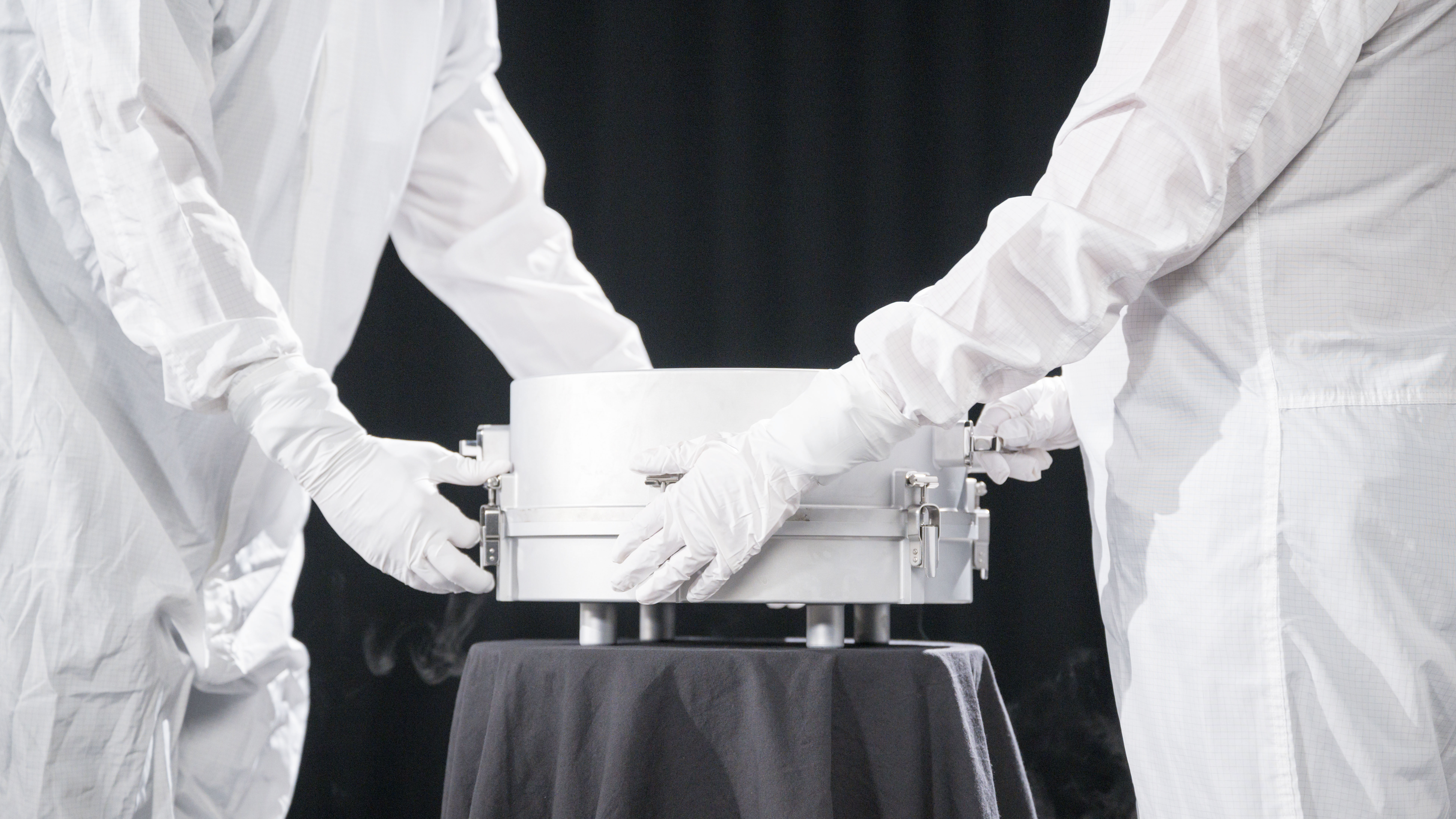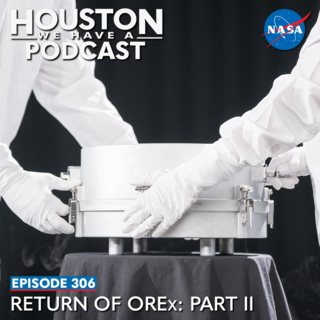
From Earth orbit to the Moon and Mars, explore the world of human spaceflight with NASA each week on the official podcast of the Johnson Space Center in Houston, Texas. Listen to in-depth conversations with the astronauts, scientists and engineers who make it possible.
On episode 306, curation experts at the Johnson Space Center discuss what happens to the asteroid samples after OSIRIS-REx lands in Utah on Sunday, Sept. 24. This episode was recorded on July 25, 2023.

Transcript
Host (Gary Jordan): Houston, we have a podcast! Welcome to the official podcast of the NASA Johnson Space Center, Episode 306 “Return of OREx: Part II.” I’m Gary Jordan, I’ll be your host today. On this podcast, we bring in the experts, scientists, engineers, and astronauts, all to let you know what’s going on in the world of human spaceflight and more. On its way back to Earth as we speak is a mission called OSIRIS-REx, or Origins, Spectral Interpretation, Resource Identification, and Security-Regolith Explorer. This spacecraft launched in 2016 to rendezvous with an asteroid called Bennu in 2018 and once it got there, it did not orbit or crash land. No, this spacecraft had a more gentle arrival, so it can take pieces of the asteroid with it on a trip back to Earth. With actual samples of the asteroid in tow, there are seemingly endless ways the scientists can use powerful Earth-bound instruments to help humanity uncover the secrets of the universe.
Earlier this year, we sat down with Mike Moreau and Nicole Lunning to learn about the preparations that were underway to prepare for the samples return on September 24 of this year. We talked a lot about OSIRIS-REx, the science, the mission, but I feel like we only skimmed the surface of what goes on here at the Johnson Space Center. Because once OREx touches down, the next stop is here, and it’s where the science really takes off, but only if the samples are handled correctly. This is where the small particles experts come in. On this episode is Christopher Snead, advanced small particles lead in Johnson’s Astromaterials Acquisition and Curation Office and Maritza Montoya, goes by Mari, small particles processor, to go deeper into the curation process and what will happen after OSIRIS-REx returns just a few days from the release of this episode. With that, here’s Christopher and Mari. Enjoy.
[Music]
Host: Christopher and Mari, thank you so much for coming on Houston We Have a Podcast.
Christopher Snead: Thank you for having us. We’re excited to be here.
Mari Montoya:Yeah, very excited to be here. Thanks for having us.
Host: We are coming into the studio a day after we organized an OSIRIS-REx Media Day, and we’ve got people parading around and there was a lot of excitement. What’d you guys think about that? Christopher?
Christopher Snead: I think it was overwhelming, but really very valuable for people to see all the work that’s gone into getting ready for this mission. Not just the curation labs, but the places where we practiced, the places where our engineers prototyped apparatus and devices for the mission and also the research labs where some of the scientists will be doing some of the initial analyses of these samples. And so that was all on tour yesterday and I think that was great for everyone to see the scope of how we’re preparing.
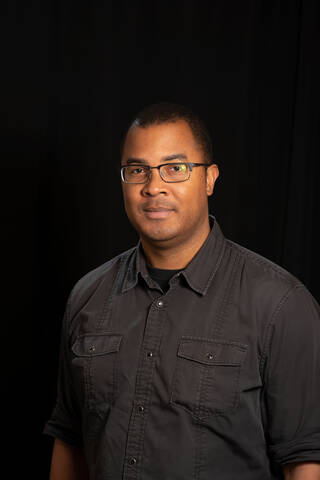
Host:We’ve been having a lot of communications just about getting people excited. I think a lot of people are excited for this sample to be returned and entered through the atmosphere, and it’s this big grand event. But you guys are saying, “look how prepared we are, look how much work we’ve done to make sure that once it does hit the ground, we are doing everything in our power to make sure that this sample is pristine, that we divide it and send it to the right scientists.” And there’s a lot of interest. I feel like the people coming, the media coming onsite was just kind of validation, at least for me, that there’s a lot of people interested in this. I wonder if that hit you, Mari, just to just see the number of people and be like, “people are asking questions,” like actively trying to understand what process goes into that. People are really into it.
Mari Montoya:Yeah. It feels like it’s picking up speed now. You know, just seeing all those different groups of people come in. We had three groups come into the different labs and it was about seven to 10 people in each group. And it’s just really nice to see everyone so excited. They want to learn so much about what we’re doing here at Johnson Space Center and what we’re doing in our curation lab.
Host: How about you? We’re recording this in July, and of course we have a couple of months, right? OSIRIS-REx is going to be returning in September. How do you guys feel in this moment? Do you feel like we’re ready, there’s a way to go? Is it actually becoming more real? Like, oh my gosh, this thing has been returning for years now, and now it’s months away. It’s very, very close. How does that sit with you?
Mari Montoya:So it feels like you’re going at the top of a rollercoaster. You’re at the tipping point and it’s like, it’s almost showtime. It’s almost like—
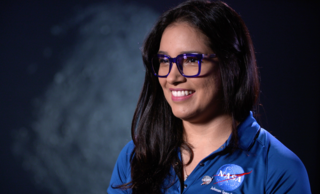
Host: You can see over the edge. You’re like, “I’m going to drop, I’m going to drop.”
[Laughs]
Mari Montoya:Exactly. That’s exactly how it feels. We’re ready though.
Host: Same with you, Christopher?
Christopher Snead: Yeah, it’s very true. I mean, we’ve been doing a number of rehearsals. We just got back from Utah. We were there last week doing a rehearsal for the recovery. And it feels very real because, you know, we’ve been thinking about this since 2016, since it launched. I’ve been with the mission about that long in curation. To see it come back in a couple of months is just going to be incredible. Every day is filled with a bunch of new things to get ready for and prepare ourselves psychologically for it as well.
Host: You’ve been with the project you said, since 2016? And of course, I’m sure you had some work before that in your career to get you to that point and prepare you for this moment. Tell me about what led you to where you are today?
Christopher Snead: When I was an undergraduate, I was an undergraduate at UC Berkeley, and I was doing research in an experimental astrophysics group. And this group was also, as a side project, looking at particles captured in aerogel and they told me about this mission that was coming back called Stardust, which was going to capture comet dust in aerogel. And we were trying to understand how we were going to remove those particles from the aerogel and analyze them and that became my undergraduate research project and I started working on that more and more until in 2006 I was actually here at Johnson Space Center participating in the initial extractions of those comet particles from Stardust. Ever since then, I was hooked.
Host: Yeah, cause you have all these theories, these concepts of how am I going to do it? And then they invite you to actually do the things that you’ve been imagining for that rock.
Christopher Snead: Exactly.
Host: Oh, that’ll sell you.
Christopher Snead: Yeah so this is a little bit like déjà vu, that excitement of a mission coming back, watching it reenter the atmosphere, come through the building doors and Building 31 and when that canister lid opens, it’s just going to be something.
Host: I know Christopher, you had a lot of work to do the same exact things, right? Prepare, think about “how can we best you extract these samples, take care of these samples?” And I absolutely want to circle back on that. Mari, your history that led you to your role right now in OSIRIS-REx curation.
Mari Montoya:So I started with the love of geology in my undergrad, and I kind of did field work for my research professor there on petrology, different mineral compositions that we were looking at Big Bend State Park. But then once I dove into my master’s program, that’s where I kind of saw a path towards space science and NASA Johnson Space Center. And so when I got here, I went under Christopher’s wing and it was right away training me into ultramicrotomy, small particles, and kind of just expanding, you know, my sense of planetary science from there.
Host: I wonder why rocks though. You know, you said you always had a love of rocks at face value. It’s like why rocks? What was so intriguing to you?
Mari Montoya:So I would take these road trips with my dad in Mexico, and we were not really allowed to go hiking or anything like that, but I would just look at the mountains from far away and I’d be like, “I really want to go hike those mountains.” And then slowly but surely, I found out in college that I could even study geology and go hiking, you know, as a career if I wanted to. And it kind of started from there, but it was environmental science that kind of hooked me and then ecology and just like love for the environment. But then, I don’t know, it was just the rocks. It was like, okay, those are it, those are puzzle pieces to like telling us the history of our world, of our planet, of our solar system. And that’s what really hooked me.
Host: That’s fascinating. I had something similar we’re driving in the car. I was looking up though. I was looking at being a pilot and soaring through the skies and like that sort of thing. I eventually was able to fly, never pursued a career as a pilot, but I know that I connect with that feeling of just like, “I want to go to there.” I want to do that thing. That’s so cool. Big Bend State Park, too. I’ve been. It’s an absolutely beautiful place. When you talked about the rocks and the mountains in the background, it has that, you got to do that.
Mari Montoya:It has lot. That, and all, the sky over there, it just looks like a dome. It looks fake almost. It’s just this starry night. And it’s the most beautiful place you could see stars, I believe.
Host: Super clear. Yeah, exactly why I wanted to go as well. So yeah, you guys were both hooked on this. Let’s take a brief recap because this is part two. We haven’t done part one in some time now. So just a quick recap of what we’re going to be talking about here today. What we’re going to talk about is OSIRIS-Rex curation, this sample that’s coming back and how we are preparing here, Johnson Space Center. The the big thing is of course, it needs to come back, but then what happens after that? But let’s review what is so special about OSIRIS-Rex: went to Bennu and it’s coming back. Christopher, if you can tell us just a brief description, if someone said, “well, what is OSIRIS-REx and what is its mission?” How do you capture that?
Christopher Snead: OSIRIS-REx is a mission to study the asteroid Bennu. The acronym for OSIRIS-REx actually says a lot about some of the mission goals and accomplishments.
The “O” is for “Origins,” we think that carbonaceous asteroids like Bennu holds secrets to the origin of the solar system.
Spectral interpretation: We observe a lot of asteroids remotely from the ground and we interpret their spectra to mean something about their composition. And we want to get samples and compare the spectra of the samples that we have to the spectra that we get remotely, so that we can understand better what we’re looking at when we’re surveying the solar system for other asteroids.
Resource identification: We expect that at some point in the future, asteroids like Bennu will be a source for resources as we increase our space activity.
Security: We want to understand rubble pile asteroids like Bennu in case they have the possibility of hitting Earth one day and so that was an aspect of that. And so that’s the “OSIRIS” in “OSIRIS-Rex.” So all of those things are of interest to this mission.
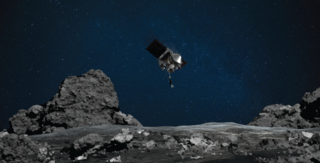
Host: Yeah, and the last part is the Regolith Explorer.
Christopher Snead: Regolith Explorer, yes.
Host: Yes. And this is a big part of it because the interesting thing about OSIRIS-Rex, and, I mean, I think we’ve been mentioning, but to say it very clearly, is this did not just go to an asteroid. It did not visit, it did not orbit, it did not land and stay there. It is returning.
Christopher Snead: Yes.
Host: Returning to Earth with a pristine sample, a pristine story of the solar system formation.
Christopher Snead: Yes. The largest sample return that we have done since the Apollo era.
Host: Wow. Yes. So, that’s significant because why? What is good about having a lot of sample?
Christopher Snead: So if you take a mission like Stardust, which was scientifically very rich, you’re looking at the smallest components of the asteroid dust, it was a very small amount. It’s hard to understand things like were there chondrules? Were there larger fragments that we recognize in meteorites in this comet? When you have a larger sample, you get a more representative sampling of this body and what’s in it and what it looks like compared to meteorites that we have on Earth. And also, just having more sample means that that sample’s going to be more valuable longer. People will be doing research on these samples for decades, and there will be instruments that don’t even exist yet. And those will be used to study these very same samples. And the more you have, and the more pristine you keep that in your curation facility, the longer they are scientifically interesting and viable.
Host: I’m glad you said that because that’s not just notional. We just recently opened Apollo samples after 50 years, because we had the instruments. We had better, cooler instruments to do cooler stuff. I mean, it is not just notional. We actually did that thing. So you’re thinking ahead. You’re thinking ahead. We want to do that again. As great as our instruments are right now, they’re going to be better.
Christopher Snead: Absolutely.
Host: Yeah, and that’s huge. So we’re talking about OSIRIS-REx and its importance. It can tell us a lot about, Mari, what? We can get a lot of sample, but what is specific about Bennu? What is specific about this particular sample that is interesting, that’s got a lot of scientists excited?
Mari Montoya:So Bennu is a carbonaceous asteroid, like Christopher was saying, and it’s something that has the organic building blocks, and it could potentially have these organic building blocks that started life here on Earth as well. So that’s something that’s really excited to look at and analyze.
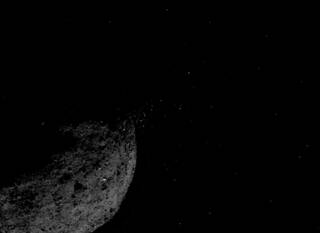
Host: Origins of life in the universe.
Mari Montoya:Origins of life in the universe, exactly.
Host: That’s it. That’s all. Okay.
[Laughs]
Christopher Snead: Also to build on that a little, we know that meteorites that come from asteroids contain all sorts of interesting inclusion. Some of them contain grains of material that condensed in the atmospheres of other stars before our solar system formed, we call those “pre-solar grains.” We have inclusions that were the first solids to condense in the solar nebula. And these all tell us about the history of our solar system and perhaps how solar systems form, how common the process that had formed our solar system is for other solar systems.
Host: I didn’t realize that at the Media Day yesterday when we were going around to the different stops, you actually brought out some of the instruments that were analyzing Hayabusa samples. And what I didn’t realize, I thought Hayabusa was just something in the solar system. But that story that you’re talking about, Christopher, it was telling stories about other stars. Unbelievable. I didn’t even think about that.
Christopher Snead: One thing that I always like to think about when studying meteorites and studying inclusions like pre-solar grains, is you’re actually doing astronomy in the lab. You’re understanding the nucleosynthetic processes and the evolution of the galaxy through analysis in a lab as opposed to remotely observing it.
Host: That’s right. That’s one thing. So we’ve had a lot of folks from Astromaterials on this podcast, and one thing that has become increasingly clear to me is when I was talking about like, “what’s interesting about rocks?” Rocks are stories, exactly as Christopher is saying. I mean it’s a telescope into another star, but it’s captured and preserved in a rock. It’s not just dirt, it’s not just a boulder. It’s stories.
Mari Montoya:Right. Puzzle pieces I would say. A puzzle piece because you’re not getting the whole story, even when you do get a sample.
Host: So obviously, you know, this is not just the sample returns, and you go out to the desert, and you pick it out of a capsule and sling it over your back and walk it over to a lab. There is a very defined process to make sure that the stories of these rocks are preserved and pristine and we treat them well so that scientists have the best possible science so it’s not contaminated. And so this is where you guys come in, right? This is your job to make sure that the sample is as pristine as possible. And we’re going to throw around this term, we’re going to talk about curation. And I don’t think we’ve actually really talked about exactly what that is. Christopher, we’ll go to you for a second. What is curation?
Christopher Snead: Well, if you think about someone like a museum curator who’s curating precious, works of art, they’re trying to preserve the condition of that artwork such that atmosphere and light and things of that nature don’t degrade the painting over time. And astromaterials curation is kind of like that. We have these rocks that are scientifically interesting. We sampled them from an airless body. We’re bringing them back to Earth, and we want to make sure that as soon as they get here, our atmosphere isn’t contaminating them, microbes that are exist in the air and on our surfaces aren’t contaminating them, and we ourselves are not contaminating them because we want to preserve the scientific viability of these samples for many generations.
Host: Do when it comes to curating materials, astromaterials from space, did that start here at the Johnson Space Center?
Christopher Snead: Yeah. So the first astromaterials that were curated returned from space were the Apollo Moon rocks and we were the first facility to do something like that and we’ve been doing it now for half a century at Johnson Space Center. Now, of course, as space exploration has increased in other countries or returning samples, there are curation facilities in Japan at JAXA (Japan Aerospace Exploration Agency) that we work with very closely. There are curation facilities in Canada. The European Space Agency, they’re building their curation facilities. So more of these are emerging as sample return is becoming a priority for planetary science. But we have the longest history of curating Moon rocks, meteorites collected from Antarctica, cosmic dust that’s been collected in the stratosphere, solar wind from the Genesis spacecraft. Even the spacecraft that we bring back that get hit by micrometeorite impacts, we preserve those spacecraft hardware as part of our collection. And now of course, OSIRIS-REx and Hayabusa 2 and in the future, Artemis, maybe Mars samples. This is all part of our rich legacy and history of sample curation.
Host: That’s right. Now, you talk about we’ve started this and it, it expanded certainly around the world, but when it comes to what makes a curation facility a curation facility, Mari, what is it? What is inside? What’s the equipment, the tools, the facilities? What makes the building able to preserve on Earth as pristinely as possible, these samples?
Mari Montoya:We’re talking about clean rooms, right? ISO 5 clean rooms, they have to be at a certain level, at a certain particle count level to preserve samples. And they need to be able to keep these samples free from contamination. So they’re kind of sealed off laboratories from the rest of the building. And we have different infrastructure integrated in our buildings, specifically for the safety of these samples.
Christopher Snead: Also to build on that, one of the most important things that we do to preserve these samples is we keep them out of oxygen. And so all of the handling, the processing, opening the spacecraft, those are all done in nitrogen-purged glove boxes so that we don’t get alteration of our products, of our samples from oxygen, from microbes, from other contaminants in the air, from water. Especially if we’re interested in the water content of a carbonaceous asteroid. We certainly don’t want contamination from the water in our own atmosphere, which is significant here in Houston.
Host: Yeah, that’s right. I was going to say, removing a lot of humidity in Houston. This must be a really good facility if it’s been doing that with Apollo samples for all of these years, right? So nitrogen doesn’t chemically react with the samples, but oxygen does.
Christopher Snead: Yes. Well, oxygen is one of the most reactive gases in existence. I mean, this is why oxygen is a biomarker, because if you just leave oxygen in an atmosphere with nothing producing it constantly, it reacts with all the rocks and the terrain. This is why Mars kind of has that reddish-brown color. So if you see oxygen in an atmosphere, it’s because something’s actively producing it, it’s very reactive.
Host:Okay.
Christopher Snead: And so we don’t want something that’s never been in an oxygen atmosphere to suddenly see oxygen because we know from fresh meteorite falls that very soon after a meteorite falls, the atmosphere starts reacting with some of the compounds and the minerals in that meteorite.
Host: I see. Okay. So the facilities are designed in such a way where inside of a glove box, let’s just say, or inside a container where that is kept, it is a 100% nitrogen environment.
Christopher Snead: Very close to 100%. We might have something like five or 10 PPM of oxygen.
Host: Okay. But it’s enough to say like those parts per million are not going to impact the samples. So then what about the pressurization, right? Because after that, I think there’s something about rooms are pressurized to a certain point. So air flows a certain way, right?
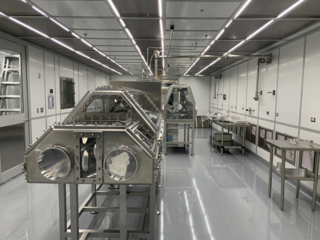
Mari Montoya:That’s correct. So for OSIRIS-REx, we have those positive pressure rooms where the pressure’s always flowing outward towards our exit doors.
Host: And I think that was a, a lesson from the Apollo days, right? Like figuring out which way should air flow. Tell me if I got this story right with, with the Apollo samples: we didn’t know if the Apollo samples had, had “yuckies” had germs inside of them. So we did negative pressure because we didn’t want any of the “yuckies” going outside of the rooms and then eventually determined that there’s no “yuckies” and actually having that negative pressure is affecting the sample pristinity. So let’s reverse it. Let’s go to positive pressure. Am I right in saying that?
Christopher Snead: I am not super familiar with the original layouts of the Apollo labs. But I do know that, you know, we have experience with clean rooms. When I say we, everyone has experience with clean rooms from manufacturing semiconductors, and there are best practices to make sure that dust is not contaminating, in our case, rocks and in semiconductors cases, the semiconductors. And so positive pressure is one way to make sure air and contaminants are always flowing out.
Host: Okay. So let’s go into those best practices then. So when it comes to handling a sample, now we’ve gone over the nitrogen environment, positive pressure we’re trying to keep in a building here on Johnson Space Center, we’re trying to make sure those rocks are as pristine as possible. Now, what do you do as a curator, as a handler to make sure that as you are interacting with the sample, you are not introducing any contaminants? What’s that process look like? You know, I’m thinking those nice white suits or something like that. So what does that look like?
Mari Montoya:First, when we go into the clean room, the first thing we’re going to put on is some shoe covers and a hair net and that’s the first thing. And then you go on dress on into your bunny suit and that prevents any particles that are on your body that you’re carrying from home or work or wherever you’re coming from to go into the lab. And then when you go into the lab and you’re handling samples, you have to have this Zen-like state, you have to move slow, you have to move cautiously and your movements are just all very careful, very different from when you’re working outside of a clean room, outside of, you know, a regular lab space. You know, the way I would handle, say my computer or something would not be the same way I would handle a sample. It’s just a completely different process for me.
Host: So what’s your routine then as you’re going into the lab? You know, you skip breakfast—
[Laughs]
Mari Montoya:Definitely do not have coffee in the morning. Absolutely avoid it. Same way I would avoid coffee for a right before a flight is how I do it for handling samples. I’m not going to drink coffee.
Host: So it’s interesting because I was talking with Charis Krysher about handling the ANGSA core, the Apollo Sample core. And I asked her that same question. I was like, “I don’t think I could drink coffee cause I would be all jittery,” right? She’s like, “nah, I had coffee every morning.” So everybody has their special kind of Zen-like routine to get into handling the sample.
Mari Montoya:I’m walking into the lab and I’m thinking, “okay, there’s nobody else in this room, no one is looking at me” like that’s how it feels like. I’m blocking out everything because I just want to zone and laser focus on the samples and the hardware that we’re manipulating because it’s just so delicate, you know?
Host: And how long are you actually with the gloves and doing that before you need a break because you know of fatigue or whatever?
Mari Montoya:So those clean room bunny suits, you are 10 degrees automatically, like just 10 degrees warmer than regular, like when you’re outside of a bunny suit. And I would say three to four hours. You want to start in the morning and then by lunchtime you want to get a good break because it, it is a lot of rigorous effort from your body physically and mentally when you’re in there.
Host: Are you handling samples too, Christopher?
Christopher Snead: I am mostly overseeing the sample handling of a specific part of the TAGSAM disintegration where we’re going to be removing the contact pads from the TAGSAM. There are 24 small disc-like collectors around the perimeter of the TAGSAM, which are coated with a stainless steel Velcro. And the idea was that when that touched the asteroid surface, it would sample the very top layer of the Regolith. That’s important because at the top surface layer, there are effects from micro meteorite impacts, from irradiation, from galactic cosmic rays, and solar rays. We call that cumulatively space weathering, and that affects surfaces of bodies and the spectral interpretation of those bodies. So there are a lot of scientists who are interested in what happens to that top layer. And so the contact pads were included specifically for that research.
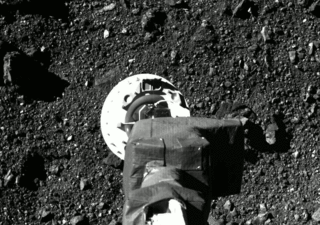
Host: Perfect. Okay. Let’s go into OSIRIS-REx curation, because I think this is super interesting, right? We talked about glove boxes, and we talked about some of the facilities. I think what’s unique about this is to prepare for OSIRIS-REx, there had to be special considerations. And we talked, and we touched on it in the very beginning, that this is the largest sample return since the Apollos, but it’s going to come in this giant container, which does not fit in any traditional airlock, glove box sort of thing. You had to sort of design a special way to extract the samples from this thing. And you’re talking about the TAGSAM which is a component of that. Part of your story is coming up with the solution for how we are going to get this sample, right?
Christopher Snead: Yeah. There were a lot of discussions about how we were going to initially open the science canister. There’s a nitrogen purge on that canister, but Lockheed originally envisioned opening that in air. And all the scientists said, “well, we want that done in a nitrogen glove box.” Nothing that we had existed that could accommodate opening the spacecraft science canister in a glove box. So we had to design something from scratch.
Host: Lockheed Martin being the designer working on the sample canister of OSIRIS-REx.
Christopher Snead: Yes.
Host: That’s why they were saying that. Okay. Okay. So you guys had to work and basically design a glove box, and you did it here at the Johnson Space Center?
Christopher Snead: We designed the glove box here. It was manufactured at a company in Italy, but we designed it here. WE designed both glove boxes. So there are two main glove boxes. There’s the one where the science canister will be opened and then there’s some one where the TAGSAM, the Touch and Go Sample Acquisition Mechanism, will be disassembled and the sample will be poured into trays. And that’s the second glove box, which is the TAGSAM glove box.
Host: So part of the Media Day, I got to see sort of the mockups of this. Because obviously in order to give the designs overseas to actually manufacture these glove boxes, you had to figure out exactly what they would look like, cause you said, Christopher, that it didn’t exist. So you had to sort of come up with that. And I think that story is interesting. It happened at an interesting time during COVID. So what was that story?
Christopher Snead: The first mockup that I designed was primarily to assess the ergonomics of the glove box. When you’re working in a glove box for a long period of time, there’s fatigue that can come from standing in an awkward position. You’re opening containers, and there could be potential for long-term cumulative injuries. And so we wanted to design a glove box that we knew was ergonomically suitable for our processors. And so I built a mockup out of foam core, and once that was done, the processors used it and said, “yes, this is very comfortable.” We said, “hey, why don’t we take a 3D-printed TAGSAM apart in it and see what that process is like.” And this evolved into doing rehearsals for the disassembly procedure in these mockups. Then before the second curation rehearsal, we built a second mockup, which is the foam core one that you saw, and that had windows. It had a lot of the hardware that we use to move the TAGSAM from the disassembly chamber into the documentation chamber. And that’s been modified and used quite extensively for the past two years.
Host: Because to that exact point, right. How would the ergonomics, you’d kind of design, you have an idea, you actually go in and try it out, you rehearse it. And you’re like, “ah, I think we can make a couple of tweaks.”
Christopher Snead: Exactly.
Host: So that was your process.
Christopher Snead: Yes. The third mockup that we have for the canister glove box, we actually made that out of plywood and aluminum extrusion. And we’ve just been using those very extensively to test our procedures to develop a curation procedure. And it was just really satisfying when the glove boxes actually got here, and now we did a rehearsal in the glove boxes for the first time, how similar it felt to what we had done. We had developed that muscle memory from the mockups.
Host: Oh, that’s awesome. That’s very, very special. I think that’s a huge point because when this sample container comes back, you can almost rely a little bit on muscle memory. It’s not like you’re playing with this TAGSAM for the very first time you have had a 3D-printed TAGSAM that you’ve been working with and manipulating and figuring out how things go together for quite some time.
Mari Montoya:Right. So when we integrate those muscle memories, right? That muscle memory from using the mockups, we’re practicing. It’s not like we’re practicing for the first time when we’re in the clear room. One of the things was that we had recently was curation rehearsal number three. And that was the first time where we used all of our equipment to open up the canister, to open up the TAGSAM to use spec special tools and tweezers or whatever it was. And it was like I was doing it again. It was familiar. The movements were familiar. I wasn’t caught off guard, if that makes any sense.
Host: It does. Yeah. It was almost like that was the 30th TAGSAM that you had undone or something like that, right? Visually, the TAGSAM, I got to actually see the 3D-printed model. So for the first time, I actually got to visualize what this thing was and how it appeared in a glove box and how you would work with it. You talked about these little Velcro things at the very top. That’s exactly what it looks like. It looks like little Velcro buttons. If you were to stick Velcro in some rocks and turn it up, it would probably pick up some of the little pebbles and little fine smaller particles, right? And that’s the idea of what you were saying.
Christopher Snead: Yes. The challenge for us once those come out is how do you remove those particles? Because now we’re in a realm of a sample that we consider small particles. These are millimeter and smaller size particles and that boundary is significant because at that scale, things like gravity aren’t the primary forces that govern those body, electrostatics become much more significant. So there are challenges for manipulating sub-millimeter samples because they stick to tools, they charge up and accelerate away unpredictably, and so that’s a whole realm of sample preparation that Maritza and I have been really practicing for many years now.
Host: I’m trying to imagine this process. I’m trying to imagine a little button, a little Velcro button, and you are in the glove box with little tweezers and meticulously picking out small, little particles from in between those Velcro pieces. And you have to do that meticulously for a long time to get every piece—no piece missed, you can’t miss anything—and you have to put it somewhere. Am I characterizing this right?
Mari Montoya:Yeah. So maybe if you think of the beach and there’s a lot of sand everywhere, and you want to take some tweezers and want to grab a single grain of sand, that’s what we’re doing. But we’re grabbing them from screw heads. You know, we’re grabbing them from tiny loops at the micro scale.
Host: Oh, my goodness.
Mari Montoya: Yeah.
Host: This is where that rehearsal, this is where that skill, those fine motor skills of actually practicing, and you mentioned, Mari, a Zen-like mode. You have to really turn everything off and relax those because this is why you have to grab the small little things. And then where do you put them after you grab them?
Mari Montoya: We have to containerize them, whether in some Concavity slides or in some special sample containers that our engineering team has designed.
Host: And so this is, I think, another important element of what this process looks like, right? When you get this sample, you’re not just taking it all out and chopping it up into little pieces and sending it out. You are categorizing and documenting where each of these tiny particles came from, putting them into containers, labeling them. Because what you want to do is give the scientists the best, most representative sample when they ask for a very specific thing. And so that’s part of what you’re going to be doing over this time is taking all the samples. This is the curation process. Taking all the samples, categorizing them, putting them into containers, labeling them, and then you also have some instruments that you’re going to be working with too, right?
Christopher Snead: Yeah. One of the most important things that we do is build a catalog of the samples that we have removed, catalog that includes information about where it came from. If photographs, masses, if they’re large enough to weigh, we conclude the masses and we build a catalog of available samples so that investigators who want to do research can make intelligent choices about what they want to study. And we even have instruments that we’re considering using like an XCT, which is X-ray, Computed Tomography, that can look through a sample and see inclusions and class inside the sample and people can make choices based on that data as well.
Host: This is where those instruments came in. Not only are you dividing the little pieces and categorizing them, you’re using some of the instruments we have here at the Johnson Space Center to better understand what they are. So when researchers ask for them, you can give them some pretty good data.
Christopher Snead: Yes. We have a number of scientists in ARES that will be doing the preliminary research on the samples to understand what they are. So that goes beyond curation and into research, but we work closely with them as well. One of the sample preparation techniques that we do for a Transmission Electron Microscope is to take one of those small particles and bed them in a resin, and then take 70 nanometer thick slices of those and put them on a grid so that they’re electron transparent. And that allows us to get mineralogy information and crystalline information about samples that are 10 microns big.
Host: Whoa. I’m guessing putting it in the resin allows it to go into a machine so that machine can slice it to that precise.
Christopher Snead: Yes. We call that “ultramicrotomy.” And Mari is an expert at that technique and will probably be doing some of that for some of the smaller samples of OSIRIS-Rex.
Host: And I’m sure you’ve had a lot of rehearsals with that, too.
Mari Montoya:Hours of training with Christopher.
[Laughs]
Ultramicrotomy. That takes a lot of time to learn and to process.
Host: Wow. We talked about rehearsals and you’ve said hours and hours of training do you feel prepared or over the next couple of months until the sample returns? You’re going to keep rehearsing and doing stuff?
Mari Montoya:Right. I mean, I feel prepared at the moment. If I need to process a sample tomorrow, I feel like I can do it. I, I’m prepared for that. But, you know, we’re going to keep rehearsing, keep repairing, and it’s just nonstop. One of the things that I did was, you know how you can pile rocks when you’re going hiking or something? You can do a little rock pile. I do that of a smaller scale, so imagine something like smaller than a golf bowl size and that can range from sand particle to a golf ball size particle or something like that. I will try to make a little rock pile, or I will try to extract individual grains and try to make an M shape or something like that. And I do that at the microscale that Christopher’s talking about, the nanometer scale. And I’ll also do it at a macro scale.
Host: What a fun way to rehearse.
Mari Montoya: It’s also good for me, it’s like a stress relief too. I’ll just get in my zone and be like, “okay, I’m not talking to people today. I’m in the lab today. I’m just like working with rocks today.”
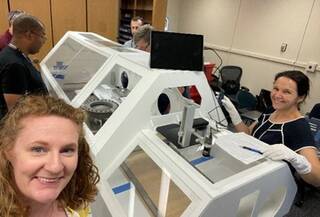
Host: Just refining the technique by doing all these fun little games. Let’s make an M today. Let’s stack today.
Mari Montoya:Because you’ve got to be very careful because in the process you can lose a particle if there’s static or something like that. And you’ve got to be able to see it. You’ve got to be able to call it out where it’s falling. And if you don’t, it’s a problem.
Host: That’s why you do it. This is an important thing to drive home as well, is you cannot lose even the smallest little grain.
Mari Montoya:You want to keep everything.
Host: Everything has to be accounted for.
Christopher Snead: Yeah, with one of our other collections, the cosmic dust collection, the particles there are usually between five and 20 microns. And there aren’t a lot of them on collectors. You might get one or two that are actually extraterrestrial. And I always think when you’re handling that, that could be a PhD thesis. That could have something in it that’s never been seen before. And so you don’t want to lose that one thing that could have been a paper in science or Nature magazine, and you want to remember that, but you also don’t want the anxiety of handling that while you’re picking it up because that’ll make you more nervous. So you have to have a balance of “this is important, we don’t want to lose it.” Also though, “whatever happens, happens.”
Host: Ah, okay. But that’s why you’re working everything out with these sort of techniques, the stacking techniques, the M shapes, those sorts of things, because you’re introducing new challenges to yourself so you can work it out exactly in the moment and be ready for handling the sample.
Mari Montoya:Yeah. For example, when I’m doing a stacking challenge, I’m trying to go as high as I can before, you know, my stack tips over. But also the higher you go, the more unstable it is. So you have to work even extra carefully around your stack, you know what I mean? Any kind of vibration that’s going to cause your sample to move. And we don’t want our samples to move at all. We want to limit any type of vibration.
Host: And of course the practice is just, you’re just using simulated rocks and simulant. There’s not risk of actually playing with actual scientific example. This is your rehearsal area. This is your practice area.
Christopher Snead: Depending on where we are in the lab, we’ll practice with an asteroid regolith stimulant, which is mostly a basalt and some other things. I’m not exactly sure the formula for the stimulant but when we first started practicing, especially with ultramicrotomy, we would practice with carbonaceous meteorites like Orgueil and Murchinson to get an idea of what the sample preparation will really be like for OSIRIS-REx.
Host: Right. And these are meteorites that landed on Earth and had that ablation on the outside. So they’re not as pristine as the OSIRIS-REx ones.
Christopher Snead: Yes. And we’ve even had some limited experience so far handling samples from Hayabusa 2, which are asteroid samples from Ryugu.
Host: Yes. And that one obviously is t from space. We want to keep those pristine as well.
Christopher Snead: Yes. That’s the closest analog that we have to what Bennu samples may look like.
Host: And obviously handling those is much more representative of what OSIRIS-REx will be than maybe the simulants.
Christopher Snead: We think.
Host: We think. Okay. Yeah, that’s right. We’ll find out.
Christopher Snead: Yeah. Yeah, we think.
Host: So what does your schedule look like? Mari, after the sample returns, the sample canister’s going to re-enter the Earth’s atmosphere on the 24th. Then what does your schedule look like after that? How long are you going to be meticulously going into the Zen-like state and working with the samples?
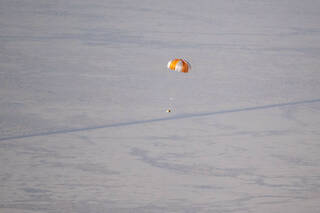
Mari Montoya:So first thing is that it lands in Utah and we’re not processing sample right away in that moment. I’m not taking apart TAGSAM in Utah, right? I’m just photo documenting at that time.
Host: You will be in Utah photo documenting, right?
Mari Montoya:Exactly. When they’re moving the sample return capsule inside the laboratory. That’s what I’ll be doing. And it’ll be just, you know, nonstop. I’m photo documenting everything.
Host: You are? Okay. Are you going to be working in the lab though, when it gets to Johnson Space Center?
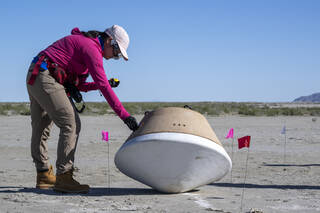
Mari Montoya:When it gets to Johnson Space Center? Yes. I’ll be working in the lab. I will be assisting with any type of camera setup—not camera setup—but it’s like lighting setup or any type of—it’s not camera setup, is it? It’s more of helping move the hardware, the canister lid when Erika (Blumenfeld) and Joe (Aebersol) are taking photos and stuff. That’s what I’ll be doing starting, and then it’s opening up the canister and things like that. There’s different roles. We all have our separate roles.
Host:Oh, okay. You don’t rotate the roles.
Christopher Snead: We’ve each practice and rehearse certain steps of the disassembly. The step that Mari and myself and two other of our processors are going to be most involved in during the procedure is when we disassemble the TAGSAM. The first thing we have to do is remove the screw heads that clamp everything in place. Those screw heads might actually have valuable sample lodged inside of them, which are analogous to what we got from the contact pads. So we’ll have to remove those. And then, that’s probably the only time when I’m personally going to be handling any samples. Then once those are removed, Mari and Julia (Plummer) and Curtis (Calva), which are two of our other processors, will begin the process of removing the contact pads and containerizing them because you can’t get to the bulk sample before you remove the contact pads. And that’s going to be a very time-consuming step.
Host: Oh, okay. Those contact pads are the little Velcro pieces that we were talking about. So you’re just going to take the whole thing off and put it and containerize them. So that way you’re not spending a lot of time actually doing it there. “We want to get those. We’ll will work with them later because we want the sample inside,” right?
Mari Montoya:Right. Even before that, whenever we’re in the canister glove box, when the canister lid is being opened, the TAGSAM is still there. We’ll be doing a TAGSAM flip and taking a quick look sample. So the quick look samples are the samples you first see around the avionics deck and, you know, just stuff that we expect to see, hopefully outside of the TAGSAM, not just what’s inside the TAGSAM.
Host: Ah, okay. So that quick look may be the first—
Christopher Snead: We anticipate that that will be the first look at what Bennu material might be.
Host: That will be very, very exciting. Who gets to do that job? You got the screws. Christopher, you got the little Velcro buttons. Who gets the quick look?
Mari Montoya:Rachel (Funk) and I will be collecting quick look.
Host: Oh, you’ll be part of it too. Oh, that’s so exciting.
Mari Montoya:Quick look, containerizing it into some Concavity slides and measuring it, photo documenting it.
Host: Wow.
Christopher Snead: Then the science team will be there ready to receive that sample and do the quick look analysis here at Johnson Space Center, so we don’t have to ship it anywhere. It’s going to go out of the lab and into an SEM and it’s going to start being characterized.
Host: You guys both have huge smiles on your faces like, you’re just imagining that moment of actually handling that sample. Cause especially you, Christopher, you say you’ve been with OSIRIS-REx since 2016. That’s a long time. And now we’re just months away from you actually getting a look at that stuff.
Christopher Snead: Yes. I started at Johnson Space Center about two months after OSIRIS-REx launched. So it’s been a process. It’s always been that thing in the distance. And then, you know, we figured, well, probably two years or so, before it comes back, there’s going to be a lot of work to do, and then the pandemic hit. And so we couldn’t do a lot of the things we wanted to do on-site. So when we finally did get back on site, there was just so much work to do and such a short period of time so much to develop. The glove boxes, the hardware, the containers, the tools we’ll be using, all of that was developed in a very short amount of time.
Host: I mean, I heard that the COVID pandemic didn’t necessarily stop you. It’s not like the work ceased until we were able to come back into the lab. I heard you were cutting pieces from your own household furniture.
Christopher Snead: Yes. I built one of the mockups in my living room. It’s true.
[Laughs]
Host: So you didn’t have to stop, right?
Christopher Snead: Yes, that’s true.
Host: What work was done while you were building the mockups in the living room? Did you make any adjustments to make the glove box that much better through that work?
Christopher Snead: That mockup was our second mockup that was made out of foam core. And during our rehearsals, we had reached a certain level where we said, “well, for this to be useful, we need things like an airlock because we want to practice moving the TAGSAM into the airlock. We want windows because right now we’re just going and reaching through the windows and grabbing things that’s not realistic. We want a more realistic thing.” And we did that and rehearsal two was in November or October 2021. And a lot of the things that we learned, for instance, that the mockup as it existed at the time, wasn’t long enough to do all of the work that we wanted to do. So we actually extended the length of the mockup. This was really valuable because you don’t want to discover that after you’ve spent, you know, a lot of money on creating a real glove box
Host: That’s important because that work needed to continue and you guys found interesting ways to solve those problems and decide to extend to the glove box and keep marching forward to prepare for this moment.
Christopher Snead: Yes. Our entire team was really creative in how they prepared for OREx, even when they didn’t have access to being on-site.
Host: Mari, when you think about yourself driving through Mexico, looking at the rocks and the mountains and the distance and thinking, “I want to go there and I want to explore.” Now you’re talking about being here at the Johnson Space Center, working with samples, uncovering stories of life and the universe and stuff. Do you think you’re fulfilling that dream that you had when you were driving?
Mari Montoya:Oh, my God. Yes.
Host: That’s awesome.
Mari Montoya: There’s a lot of moments where I’m just like, “oh, pinch me. Is this a dream?” There’s a lot of moments like that. It’s a huge deal for myself. It’s a huge deal for my family, you know, it’s a big thing.
Host: Yeah. And you’re not the only one, like you said, you just have a dedicated team, right? That’s all so passionate about doing the right thing for the samples, exploring, and being a part of this. And just hearing both of your stories and your passion and your commitment to getting us to this moment, getting us ready for OSIRIS-Rex sample return. And we are here, we’re ready at the Johnson Space Center. Very, very meaningful. Christopher and Mari, thank you so much for coming on Houston We Have a Podcast. What a fascinating conversation. I am so pumped for this sample return. I’m sure you guys are, too. You got a lot of work ahead of you, so I appreciate you dedicating at least a little bit of time ahead of this very, very busy period that you’re going to come up on to speak with us and share what you’re going to be doing. So thank you.
Christopher Snead: Thank you for having us. It’s been really exciting to talk about what we’re expecting to happen soon.
Host: Yes, absolutely.
Mari Montoya:Thank you so much. This was awesome.
Host: It was a pleasure.
[Music]
Host: Hey, thanks for sticking around. Hope you learned something today. It was really awesome to really get the excitement from Christopher and Mari today. We’re recording this just a couple of months ahead of OSIRIS-REx Return to Earth and they’ve been doing a lot of prep. They’re really, really excited. I was really happy to capture their time while they had it, because from the time that we recorded this on, they’re going to be really, really busy preparing for OSIRIS-REx return. So I hope you really enjoyed it. This is not the first time we’ve discussed OSIRIS-REx, though. You can go back and listen to Episode 27, “The Search for Life,” which we recorded before OREx even reached Bennu. And then if you want to continue that story, jump forward to 285, “Return of OREx: Part I” and we talk more about the spacecraft’s arrival at Bennu and the initial prep.
You can go to NASA.gov for the latest on OSIRIS-REx and Bennu. Be sure to watch our coverage of the return of OREx on September 24. You can go to NASA.gov/podcasts to listen to our show and the many others we have across the agency. If you want to go to ours, Houston, We Have a Podcast, you can listen to any of our episodes in no particular order on social media. We’re on the Johnson Space Center, pages of Facebook, X, and Instagram. You can use #AskNASA on your favorite platform to submit an idea or ask a question for the show, just make sure to mention is for us at Houston, We Have a Podcast. This episode was recorded on July 25, 2023. Thanks to Will Flato, Dane Turner, Justin Herring, Abby Graf Belinda Pulido, Jaden Jennings, and Shaneequa Vereen. And of course, thanks again to Christopher and Mari for taking the time for coming on the show. Give us a rating and feedback on whatever platform you’re listening to us on and tell us what you think of our podcast. We’ll be back next week.



























